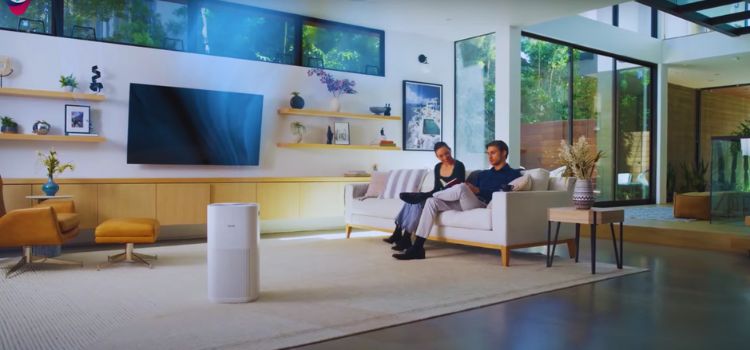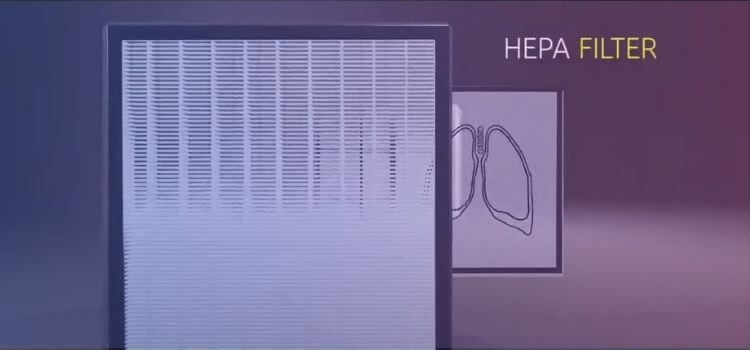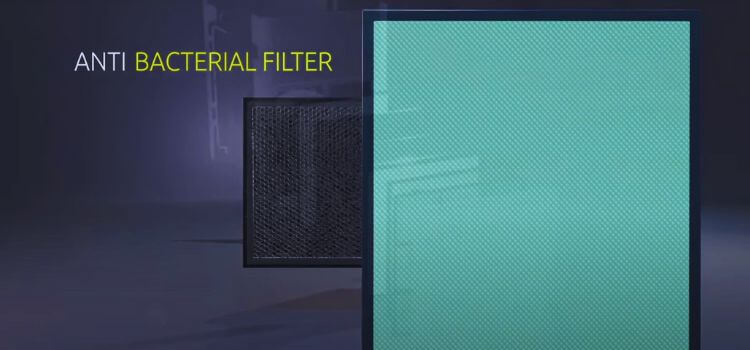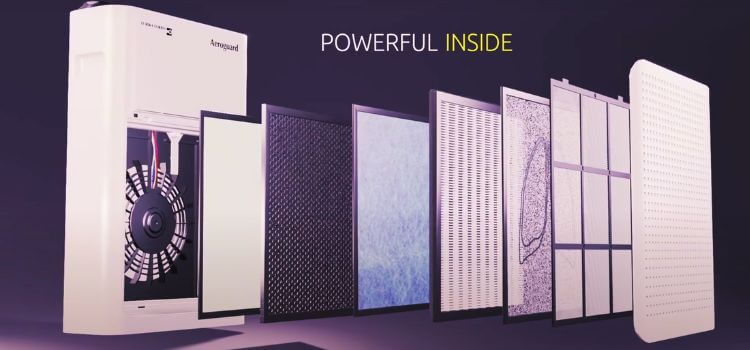Indoor air pollution is a severe problem. It affects human health all over the world. The Environmental Protection Agency (EPA) has done research. It proves how indoor air is frequently two to five times more polluted than outdoor air. This is a major worry for people who live in houses or work in facilities with poor indoor air quality.
One of the harmful air pollutants commonly found in homes is Formaldehyde. Properly maintaining air filters is essential to ensuring a healthy indoor air environment where you and your loved ones can breathe easy.
Why indoor air pollution is a significant issue
The outcome of long-term exposure to indoor air pollution: allergic reactions, headaches, respiratory diseases, heart disease, and even cancer can occur. The negative impacts of poor indoor air quality
can impact occupant’s health and their overall quality of life also.Formaldehyde as a harmful indoor air pollutant
Formaldehyde is a toxic gas found in many household items and building materials. This gas can be released into the air and cause various health issues if unchecked in the home. The risks of formaldehyde exposure are respiratory distress, headaches, and nausea. That’s why we need a best air filter for formaldehyde.
Importance of air filters in a healthy home
Investing in the right air filters proves essential in ensuring that harmful air pollutants like formaldehyde are removed from the air, promoting healthy living. Clean air promotes respiratory health, reduces allergies, and enhances overall well-being. Best air filter for formaldehyde is play a vital role for a healthy house.

What is Formaldehyde?
Formaldehyde is a chemical compound. It is used in many household items and building materials. It is commonly found in construction materials like concrete, plywood, and insulation foams. Formaldehyde enters the home through these materials and can accumulate in the air over time, leading to a toxic environment.
Sources of Formaldehyde in homes
Formaldehyde can be found in household, cleaning, and personal care products. While many of these sources can seem harmless in isolation, the compound’s harmful effects can add up over time, particularly in enclosed spaces.
Health risks associated with Formaldehyde exposure
Prolonged formaldehyde exposure can have serious effects on health ranging from respiratory discomfort to cancer.
Importance of Indoor Air Quality
The dangers of poor indoor air quality
Poor indoor air quality can lead to detrimental health hazards ranging from allergic reactions to severe ones like respiratory distress, headaches, and even death. Buildings and houses with poor indoor air quality have been directly linked to sick building syndrome that affects the occupants’ morale as well as their overall productivity.
Effects of Formaldehyde on human health
The result of formaldehyde exposure are rashes, respiratory distress, headaches, and nausea. These symptoms may be accumulative and worsen over time, leading to severe respiratory issues.
Common symptoms of Formaldehyde exposure
Common symptoms associated with formaldehyde exposure include respiratory difficulties, eye irritation, headaches, and even nausea. Formaldehyde exposure can lead to adverse health effects that are significantly reduced by having the best air filters in place.
The Best Air Filters for Fighting Formaldehyde
Types of air filters
The market offers a great variety and an array of types of air filters each best suited for specific tasks.
HEPA Filters
High-Efficiency Particulate Air (HEPA) filters are commonly found in homes and workplaces. They are best for removing small particles, dust, and allergens from the air. These filtration systems have the ability to eliminate as much as 99.97% of allergenic particles present in the air.

Activated Carbon Filters
Activated carbon filters are also commendable and effective in removing pet dander, tobacco smoke, and other odor-causing particles from the air. They work by attracting particles through a process of absorption, much like a sponge.
Ultraviolet Light Air Purifiers
Ultraviolet light air purifiers are effective in removing bacteria and viruses from the air. Using these with other filtration systems will be most effective. These filters work by exposing airborne particles to UV radiation, neutralizing the viruses and bacteria.

HEPA Filters vs. Activated Carbon Filters
HEPA filters capture particles less than 0.3 microns in size. These filters are efficient in cleaning the air of pollen, pet dander, and dust but do not capture gasses and odors effectively. Activated carbon filters, on the other hand, are perfect for removing gasses and odors. The downside is that they don’t capture particles as well as HEPA filters.
How air filters work
Air filters work by capturing particles and pollutants from the air, trapping them in the filter. HEPA filters work by mechanically trapping particles in a fine mesh, while activated carbon filters use chemical absorption to trap pollutants. Ultraviolet light air purifiers work by exposing particles to UV radiation, destroying them.
Selecting the Ideal Air Filtration System for Your Household

Points to take into account when purchasing an air filter
When buying an air filter, several factors must be considered. Among these are the room size, the type of filter, and the maintenance and replacement costs.
Room size
The size of the room determines the size of the filter required. Homes open floor plans may require more than one filter.
Type of filter
The type of filter depends on the indoor air quality problem you are facing. For instance, HEPA filters work best for dust, pollen and inhalable particles, while activated carbon filters are best suited for odors and volatile organic compounds
Maintenance and replacement costs
Air filters require replacement after a while, and some filters cost more to maintain than others. It is, therefore, essential to consider the filter’s replacement periods regularly.
How to calculate the right size air filter for your home
To calculate the right size air filter for your home, you will need to measure the room, then multiply the height by the width and then the length. The result is the room’s square footage. Filters are rated per square footage, and the appropriate filter can be chosen from the rating system.
How to Properly Maintain Your Air Filters
When to replace your air filters
There is no one-answer-fit-all regarding when to replace air filters since the replacement timeline depends on factors such as air quality, its frequency of use among others. On average, air filters require replacement every three months.
Cleaning your air filter
Cleaning your air filter ensures that the filters perform their best. They should be cleaned per the manufacturer’s instructions, and cleaning should be done routinely.
DIY air filter maintenance vs. Professional cleaning
Basic cleaning can be done through routine maintenance by the homeowners. However, deep cleaning is recommended at least once a year and should be done by professionals.
Additional Tips for Improving Indoor Air Quality
Implementing good ventilation practices
Good ventilation practices encourage fresh air circulation leading to the elimination of air pollutants. Ensure your home is well ventilated, open windows, doors and use fans to encourage airflow.
Using safe and natural home cleaning supplies
Using natural home cleaning supplies can help reduce airborne pollutants significantly. Choose non-chemical detergents, organic cleaning products, and green cleaning solutions.
Reducing indoor humidity
Reducing indoor humidity by adding moisture control devices in damp areas, using dehumidifiers, and maintaining dry HVAC systems can also help reduce indoor pollutants and improve indoor air quality. For getting pure air, two popular solutions are dehumidifiers and exhaust fans.
If this article is helpful for you, keep reading and don’t miss the FAQs Section.
Testing for Formaldehyde in the Home
DIY testing kits
Several do-it-yourself testing kits are available in home supply stores that can detect formaldehyde levels in the air of your home. These kits can be used without professional assistance.
Professional testing services
Professional testing services offer to assess indoor air quality, providing homeowners with a detailed report on their home’s air quality.
Interpreting test results and taking action
Professional assistance in interpreting DIY testing results can offer valuable tips on how homeowners can improve their indoor air quality. It is essential to take action to reduce formaldehyde levels in the home after testing screening.
Addressing Formaldehyde in Different Parts of the Home
Bedrooms
Ensure proper ventilation, use dust mite-proof bedding covers, and buy formaldehyde-free furniture for the bedroom.
Living Rooms
Use air purifiers, avoid smoking indoors, and buy formaldehyde-free furniture.
Kitchens and Bathrooms
Reduce moisture levels, use range hoods, adopt mold remediation practices and screen for formaldehyde levels in cabinets and other surfaces before purchase.
Safe Formaldehyde Removal Techniques
Ventilation
Good ventilation practices can quickly eliminate formaldehyde from the air. If your home has a proper ventilation system. The air in your home is safe to breathe.
Activated charcoal
Activated charcoal can be placed inside a porous bag and hung in the affected area to absorb formaldehyde. It has shown effectiveness in reducing formaldehyde levels naturally.
Formaldehyde removal products
Commercially available products designed to remove formaldehyde from buildings and homes can also be effective in reducing formaldehyde levels.
Air Filters for People with Allergies or Asthma
HEPA filters and allergy relief
HEPA filters can eliminate allergens from the air, reducing the risk of allergies.
Asthma and air filtration
Air filtration systems can help people with asthma breathe easier by reducing contaminants from the air. Reducing airborne irritants in the home can serve to improve the overall quality of asthma control.
Extra features to consider for allergy and asthma sufferers
Extra features such as activated charcoal filters, air ionizers, and manual fan speed control can be beneficial features for people with allergies and asthma.
Air Purifiers for Commercial and Industrial Use
Tackling Formaldehyde in commercial spaces
Commercial spaces like factories have unique needs when it comes to removing air pollutants like formaldehyde
Air filters and air purifiers for industrial sites
Industrial air filters are heavy-duty filters, specifically designed to work in commercial spaces with high air quality needs.
Selecting the right air filtration system for commercial and industrial needs
Commercial and Industrial building owners should choose an air filter that meets the unique air quality needs of industrial and commercial sites.
Conclusion
Indoor air pollution is a significant issue facing millions of people globally. Formaldehyde, a dangerous respiratory irritant, is a common air pollutant found indoors in many types of building materials and items within the home.
Using the best air filters for formaldehyde can work to remove this harmful chemical from the air, promoting a healthy indoor environment. It is essential to maintain the air filters properly, adopting good ventilation practices, and using tested formaldehyde-free building materials.
By understanding how to choose and maintain the right air filters for your home or business, it is possible to enjoy improved health, comfort, and productivity levels.
Costs associated with air filters vary according to the manufacturer, the type of filter, and its lifespan.
Yes. Air filters are effective in removing various indoor pollutants like dust, pollen, mold spores, pet dander, and other common pollutants.
No, air purifiers vary in their effectiveness based on the type of air pollution being targeted.
Air filters have varying lifespans that span from one to six months, depending on the environmental conditions of use.
Yes. Plant-based filters, like moss and bamboo charcoal purifiers, can serve to reduce formaldehyde naturally in your indoor environment.
As an Amazon Associate, I earn from qualifying purchases
